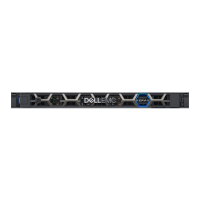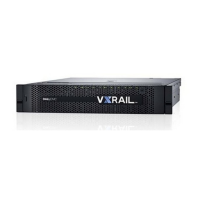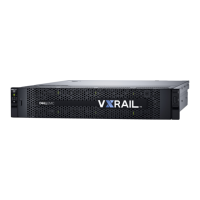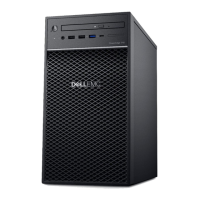31 | Network Planning Guide
© 2018 Dell Inc. or its subsidiaries
•
VM Networks VLANs
Figure 10. VxRail Logical Networks: Prior to version 4.7 and version 4.7 and later
•
If required, the additional VxRail Witness Traffic Separation VLAN
Using the VxRail Network Configuration Table, perform the following steps:
Step 1.
Configure a VLAN on the switch(es) for each VxRail logical network
Step 2.
Configure each switch port that will be connected to a VxRail node
o Set the switch port mode to the appropriate setting
o Set the port to the appropriate speed or to auto-negotiate speed
Step 3.
Configure the External Management VLAN (Row 1) on the switch ports. If you entered “Native VLAN,” then
set the ports on the switch to accept untagged traffic and tag it to the custom management VLAN ID. Untagged
management traffic is the recommended management VLAN setting on VxRail.
Step 4.
For VxRail version 4.7 and higher, configure the Internal Management VLAN (Row 2) on the switch ports.
Step 5.
You must set the management VLAN (prior to version 4.7) or internal management VLAN (version 4.7 or higher)
to allow IPv6 multicast traffic to pass through the VxRail switch ports. Depending on the type of switch you have,
you may need to turn on IPv6 and multicast directly on the port or on the VLAN. If necessary, consult the switch
manufacturer for further instructions on how to configure these settings.
Step 6.
Configure a vSphere vMotion VLAN (Row 34) on the switch ports.
Step 7.
Configure a vSAN VLAN (Row 38) on the switch ports. For release prior to VxRail version 4.5.0, set to allow
IPv4 multicast traffic to pass through. For VxRail version 4.5.0 and higher, set to allow IPv4 unicast traffic to pass
through.

